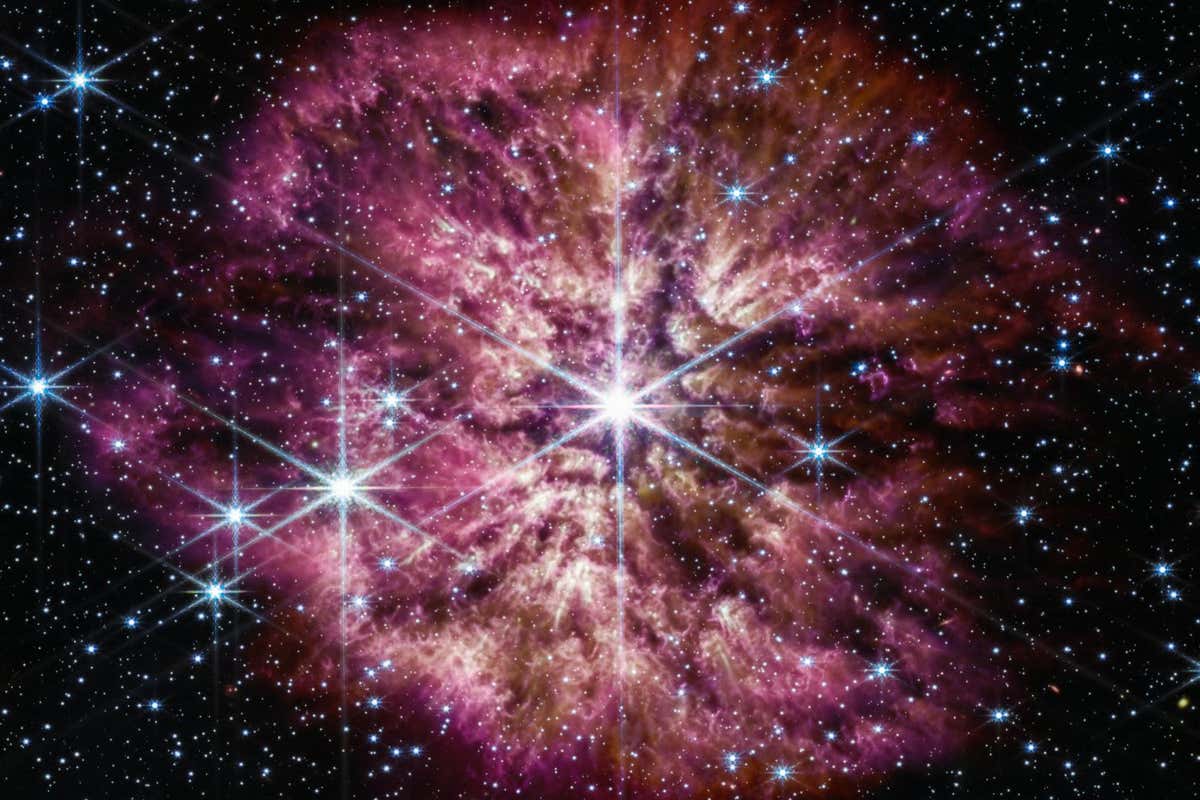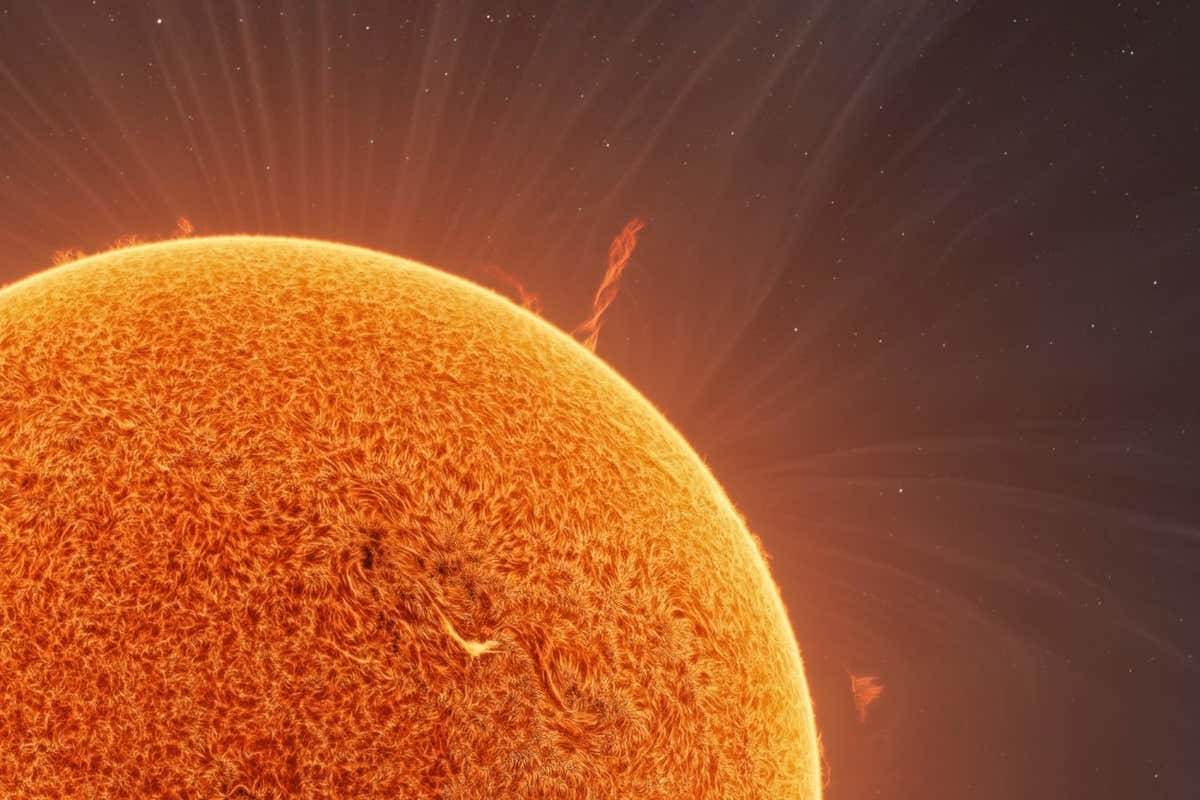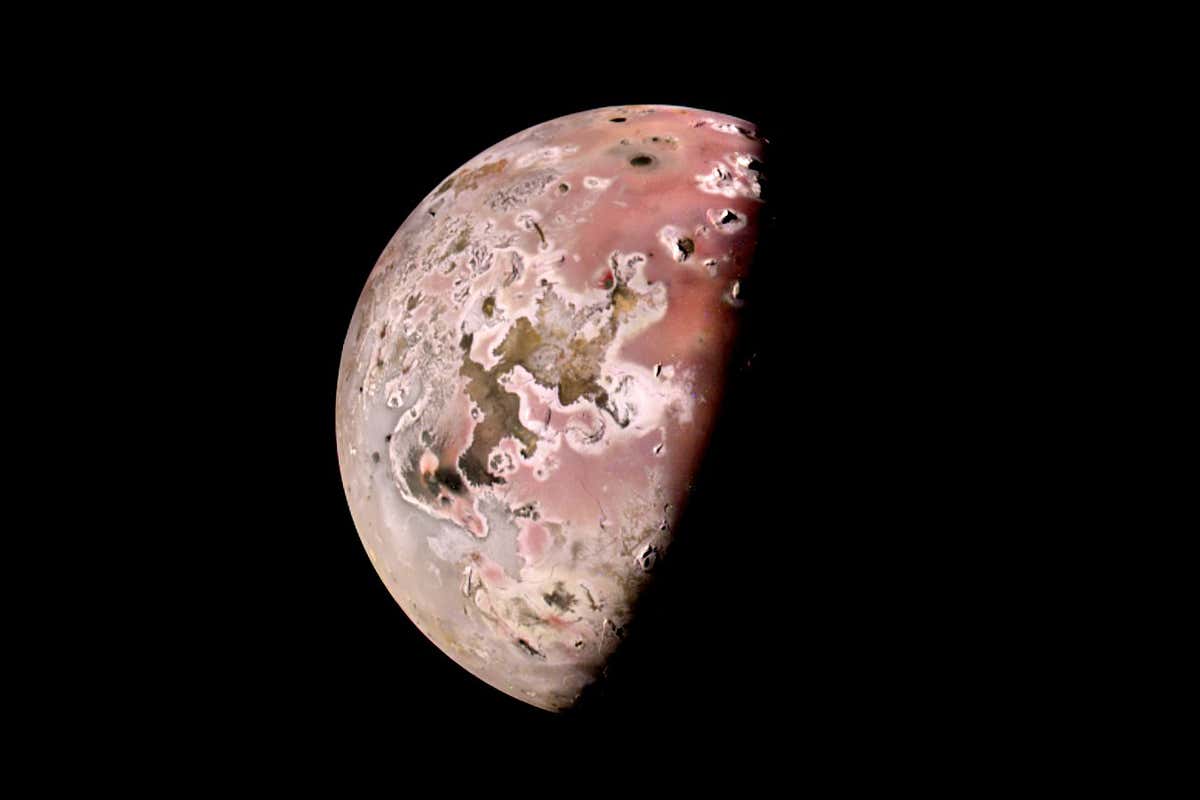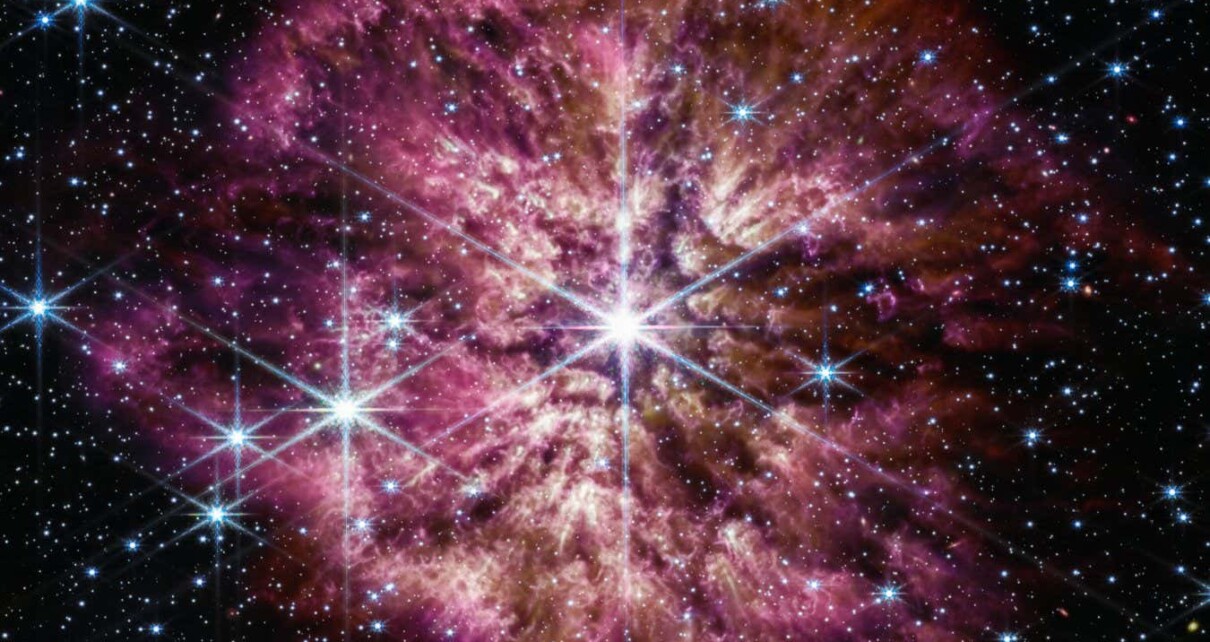[ad_1]

Right: Wolf-Rayet star WR 124 as glimpsed by JWST
NASA, ESA, CSA, STSCI and ERO Production Team
The James Webb Space Telescope (JWST) has helped make 2023 a year of astonishing cosmic images. But the groundbreaking telescope was far from the only source of visual wonderment, because a series of new missions sent back pictures from space, and the view from Earth wasn’t bad either. Here are six of the images that dazzled us the most.
The star in the top picture was caught by JWST getting ready to explode. It is called WR 124 and is about 30 times the mass of the sun.
When stars that big run out of hydrogen to burn in their core, they begin to fuse heavier elements instead. This fusion creates powerful blasts of energy, blowing out gusts of wind at velocities in the millions of kilometres per hour. When those powerful winds strip away the outer layers of the star, it becomes what is known as a Wolf-Rayet star.
Within a few million years of being stripped, it blows up in a supernova. The purplish blotches in this picture are the clouds of dust and gas that used to be WR 124’s outer layers – it has already lost about 10 times the mass of the sun – and without those layers intact, it is now doomed to go supernova.

A solar tornado seen from Earth
Andrew McCarthy and Jason Guenzel
Next up, we have the tallest solar tornado ever recorded (above). The event occurred on 14 March, when the rotation of the sun’s magnetic fields churned up the plasma near its north pole. This feature rose from the sun’s surface until the giant flare reached 178,000 kilometres tall – that is nearly 14 times the diameter of Earth.
This image was the result of a painstaking collaboration between astrophotographers Jason Guenzel and Andrew McCarthy. They used a high-speed camera to record the event, and took five days and 90,000 individual shots to create their picture. The sun looks furry in the image because it is covered in millions of churning geysers of plasma that last only a few minutes each.

Newborn star Herbig-Haro 211, captured by JWST
ESA/Webb, NASA, CSA, Tom Ray (Dublin)
This luminous explosion (above) reveals a newborn star’s incredible supersonic jets. These make it what is known as a Herbig-Haro object. The star itself is hidden in the dark cloud of gas from which it formed, but as the jets shoot out on either side of it, they slam into surrounding gas and dust, creating huge shock waves and lighting up.
This particular object, called Herbig-Haro 211, is about 1000 light years from Earth in the constellation Perseus. That makes it one of the nearest Herbig-Haro objects we know of, which is why JWST was able to capture the most detailed image of one ever taken. This revealed strange wiggles in the jets, which may indicate that Herbig-Haro 211 actually has a companion star.

Jupiter’s moon Io
NASA/JPL-Caltech/SwRI/MSSS/Brian Swift/CC BY
Getting back to our own solar system, we move on to Jupiter’s moon Io (above). In October, NASA’s Juno spacecraft passed just 11,645 kilometres over this moon’s surface, taking this stunning image as it passed by. This is one of best photographs of Io ever taken, detailed enough to show the shadows of some of its enormous volcanoes.
Despite being only slightly larger than Earth’s moon, Io is thought to be studded with more than 400 active volcanoes, making it the most geologically active object in the solar system. The lava flows from those volcanoes give Io its distinctive mottled colours, which are enhanced in this image. In 2024, Juno will get even closer to this strange little moon’s surface, providing even more detail on its ever-changing geology.

India’s Vikram lander on the lunar surface, part of the Chandrayaan-3 mission
ISRO
And on to our own moon. On 23 August, India’s Chandrayaan-3 mission became the first to land near the south pole of our moon. This picture (above) of the Vikram lander on the lunar surface was taken a week later by the mission’s Pragyan rover. Studying the south pole of the moon, which Chandrayaan-3 began, is particularly important because of the large amounts of ice there, which could be useful for future human exploration and possible permanent moon bases.

An amateur astronomer’s view of comet Nishimura
Javier Zayas/Moment RF/Getty Images
Our final image is of a more fleeting nature. Above is the comet Nishimura, seen from Earth as it streaked across the night sky.
Two rare green comets made dramatic appearances in the skies this year. First, in early February, the comet C/2022 E3 made its first close pass to Earth in 50,000 years. Then, in August, amateur astronomer Hideo Nishimura discovered another comet – now named after him – which remained visible for about two months. These comets appear green because the gas around their rocky nuclei contains diatomic carbon, which is a relatively rare substance made of pairs of bound carbon atoms.
Make the most of the image of Nishimura now because the comet takes about 437 years to orbit the sun, so won’t be seen again until the 25th century.
Topics:
[ad_2]
Source link




